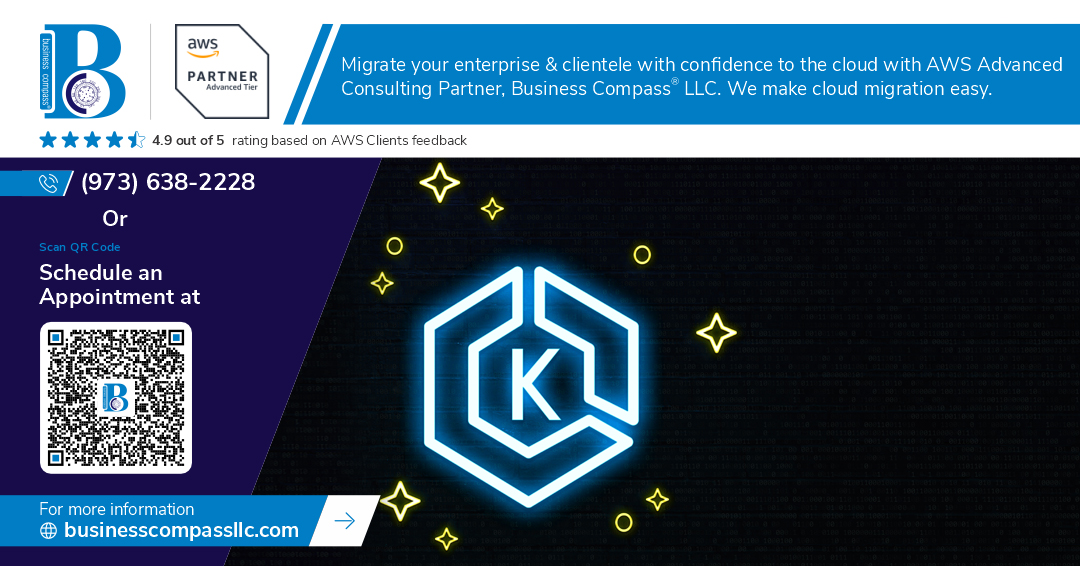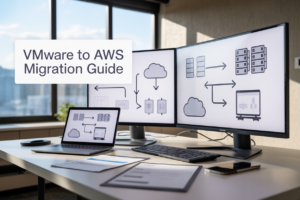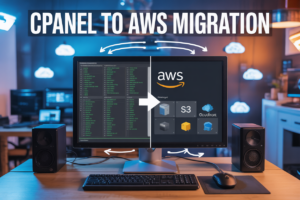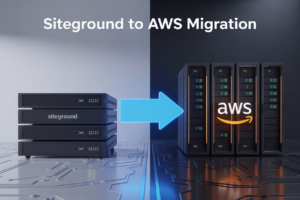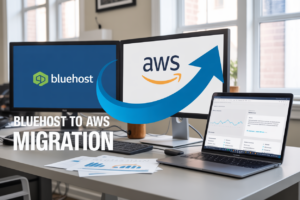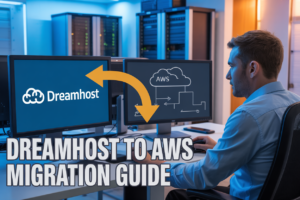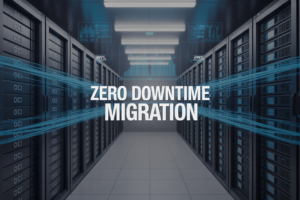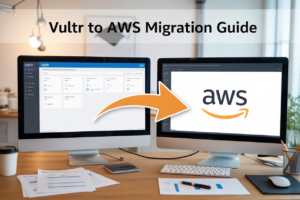Amazon EKS powers thousands of production workloads, but a single misconfiguration can expose your entire Kubernetes infrastructure to costly breaches and downtime. Building resilient and secure EKS clusters requires more than just spinning up nodes and deploying applications.
This guide is designed for DevOps engineers, security professionals, and platform teams who need practical, battle-tested strategies to harden their EKS environments. You’ll get actionable insights that go beyond basic setup to create truly robust Kubernetes clusters.
We’ll cover essential security configurations that form your cluster’s foundation, including proper IAM roles, security groups, and encryption at rest. You’ll also learn how to implement zero trust network architecture that treats every connection as potentially hostile, plus proven disaster recovery strategies that keep your applications running when things go wrong.
Each section includes real-world examples and configuration snippets you can adapt to your environment right away.
Essential Security Configurations for EKS Cluster Foundation
Enable comprehensive audit logging for compliance and monitoring
EKS cluster security starts with robust audit logging that captures every API call, resource change, and authentication attempt across your Kubernetes environment. Configure CloudTrail and enable EKS control plane logging to track cluster activities, authentication events, and API server requests. Set up centralized log collection using CloudWatch or third-party SIEM solutions to monitor suspicious activities in real-time. Audit logs provide essential visibility for compliance frameworks like SOC 2, PCI DSS, and help security teams quickly identify unauthorized access attempts, policy violations, and potential threats targeting your containerized workloads.
Configure private API server endpoints to reduce attack surface
Private API server endpoints dramatically reduce your cluster’s attack surface by removing public internet exposure and restricting access through your VPC network. Configure your EKS cluster with private endpoint access only, ensuring all kubectl commands and CI/CD pipeline connections route through secure VPC connections or VPN tunnels. This configuration prevents external attackers from discovering and targeting your API server while maintaining full functionality for authorized users and services. Combine private endpoints with security groups that allow traffic only from specific IP ranges or VPC endpoints for maximum protection.
Implement proper IAM roles and service accounts integration
Amazon EKS best practices require seamless integration between AWS IAM roles and Kubernetes service accounts to provide fine-grained access control without embedding credentials in pods. Use IAM Roles for Service Accounts (IRSA) to automatically inject temporary AWS credentials into pods based on their service account annotations. Create dedicated IAM roles for different workload types with minimal required permissions following the principle of least privilege. This approach eliminates hardcoded secrets, enables automatic credential rotation, and provides detailed audit trails for all AWS resource access from your containers.
Set up network policies for pod-to-pod communication control
Network policies enforce zero-trust communication patterns by controlling traffic flow between pods, namespaces, and external services within your EKS cluster. Install a compatible CNI plugin like Calico or Cilium that supports Kubernetes NetworkPolicy resources for microsegmentation capabilities. Define explicit ingress and egress rules that allow only necessary communication paths between application components. Start with deny-all policies and gradually whitelist required connections to prevent lateral movement during security incidents. Regular network policy audits help maintain security posture as your applications evolve and new services get deployed.
Strengthening Node Security and Access Management
Harden worker node AMIs with security patches and configurations
Start with custom AMIs built on security-focused base images like Amazon Linux 2 or Ubuntu Pro. Configure automatic security patching through AWS Systems Manager Patch Manager and implement CIS benchmarks for OS hardening. Remove unnecessary services, disable unused ports, and enforce file system permissions. Set up kernel-level security modules like AppArmor or SELinux to prevent unauthorized system access. Deploy configuration management tools like Ansible or AWS Config to maintain consistent security baselines across all nodes. Regular vulnerability scanning and patch deployment keeps
Network Security Architecture for Zero-Trust Environments
Design secure VPC layouts with proper subnet segmentation
Creating a proper VPC architecture forms the backbone of zero trust network architecture for EKS clusters. Design your VPC with dedicated public subnets for load balancers and NAT gateways, while placing worker nodes in private subnets across multiple availability zones. This segmentation prevents direct internet access to your nodes and creates natural network boundaries. Use separate subnets for different workload tiers – web, application, and database layers – to control traffic flow between components. Consider implementing dedicated subnets for sensitive workloads that require additional isolation, ensuring your EKS cluster security follows defense-in-depth principles.
Configure security groups with minimal required permissions
Security groups act as virtual firewalls that control traffic at the instance level. Create granular security groups that follow the principle of least privilege, allowing only necessary ports and protocols. For EKS worker nodes, restrict inbound traffic to essential ports like 22 for SSH (from bastion hosts only), kubelet ports (10250), and NodePort ranges if required. Outbound rules should permit HTTPS traffic for pulling container images, communication with EKS control plane, and accessing AWS services. Avoid using broad CIDR ranges like 0.0.0.0/0 and instead reference specific security group IDs to create secure communication channels between components while maintaining strict access controls.
Implement ingress controllers with SSL termination and WAF protection
Deploy robust ingress controllers like AWS Load Balancer Controller or NGINX Ingress Controller to manage external traffic securely. Configure SSL termination at the load balancer level using AWS Certificate Manager (ACM) certificates for automated certificate management and renewal. Integrate AWS WAF to protect against common web exploits, SQL injection, and cross-site scripting attacks. Set up custom WAF rules to filter malicious traffic patterns specific to your application stack. Enable request logging and monitoring to track access patterns and potential security threats. Configure rate limiting to prevent DDoS attacks and implement IP whitelisting for administrative interfaces.
Set up network monitoring and traffic analysis tools
Deploy comprehensive monitoring solutions to maintain visibility into your network traffic patterns. Use VPC Flow Logs to capture information about IP traffic flowing through your network interfaces, storing logs in CloudWatch or S3 for analysis. Implement AWS X-Ray for distributed tracing across your microservices architecture, helping identify performance bottlenecks and security anomalies. Deploy Kubernetes-native monitoring tools like Prometheus and Grafana to track cluster-specific network metrics. Consider using third-party solutions like Falco for runtime security monitoring and anomaly detection. Set up automated alerts for suspicious network activities, unauthorized access attempts, and unusual traffic spikes.
Enable encryption in transit for all cluster communications
Secure all data transmission within your EKS cluster by enabling TLS encryption across all communication channels. The EKS control plane automatically encrypts communication between the API server and worker nodes using TLS. Configure service mesh solutions like Istio or AWS App Mesh to provide mutual TLS (mTLS) authentication between microservices, ensuring encrypted communication at the application layer. Enable encryption for etcd storage and backup processes to protect sensitive cluster configuration data. Use AWS Systems Manager Session Manager instead of SSH for secure node access without opening inbound ports. Implement certificate rotation policies using cert-manager to maintain fresh certificates and prevent security vulnerabilities from expired certificates.
Data Protection and Encryption Strategies
Configure etcd encryption at rest for sensitive cluster data
Amazon EKS automatically encrypts etcd data at rest using AWS KMS keys, but configuring custom encryption provides better control over your EKS cluster security. Enable envelope encryption by creating a KMS key specifically for your cluster during deployment. This ensures that sensitive Kubernetes objects like secrets, config maps, and resource definitions remain protected even if underlying storage is compromised. The encryption happens transparently without performance impact, making it essential for Kubernetes security hardening in production environments.
Implement secrets management with AWS Secrets Manager integration
Replace hardcoded credentials with AWS Secrets Manager integration using the Secrets Store CSI driver. This approach automatically mounts secrets as volumes in your pods, ensuring sensitive data never appears in container images or environment variables. Configure the SecretProviderClass to specify which secrets to retrieve and how to map them within your containers. The integration supports automatic rotation and provides audit trails, significantly improving your Amazon EKS best practices for credential management while maintaining zero-trust principles.
Enable persistent volume encryption for stateful workloads
Protect data in persistent volumes by enabling EBS encryption at the storage class level. Configure your storage classes with encrypted parameters and specify KMS keys for granular control over encryption keys. For existing volumes, create encrypted snapshots and restore them to new encrypted volumes. This EKS encryption strategy ensures that database files, logs, and application data remain secure both at rest and during snapshot operations, meeting compliance requirements for sensitive workloads.
Set up backup and disaster recovery procedures for critical data
Implement comprehensive backup strategies using Velero for cluster-level backups and native AWS services for persistent data. Schedule regular backups of both cluster configurations and persistent volumes, storing them across multiple availability zones. Test restore procedures regularly to ensure your Kubernetes disaster recovery plan works reliably. Configure cross-region replication for critical data and maintain documented runbooks for various failure scenarios, ensuring business continuity and minimizing recovery time objectives for your EKS deployments.
High Availability and Disaster Recovery Planning
Deploy across multiple availability zones for fault tolerance
Spreading EKS clusters across multiple availability zones creates a safety net that keeps your applications running even when entire data centers fail. Configure your node groups to span at least three AZs within a region, ensuring the control plane can maintain quorum and workloads continue serving traffic. Place critical applications using pod anti-affinity rules to guarantee they never share the same zone. This geographic distribution transforms single points of failure into resilient infrastructure that automatically routes traffic away from unhealthy zones.
Configure auto-scaling groups for dynamic capacity management
Auto-scaling groups adapt your EKS node capacity to match real-time demand, preventing both resource waste and performance degradation. Set up Cluster Autoscaler alongside Horizontal Pod Autoscaler to create a responsive scaling ecosystem that adds nodes when pods can’t schedule and removes them when utilization drops. Configure multiple node groups with different instance types and pricing models—mixing on-demand instances for baseline capacity with spot instances for cost-effective burst scaling. Define proper resource requests and limits in your pod specifications to give autoscalers accurate signals for scaling decisions.
Implement cluster backup strategies for configuration and state
Regular backups protect your EKS cluster configuration, persistent data, and application state from corruption or accidental deletion. Use Velero to create comprehensive backup policies that capture persistent volumes, cluster resources, and custom configurations on automated schedules. Store etcd snapshots in separate regions and test restoration procedures monthly to verify backup integrity. Document your backup retention policies and implement versioning strategies that balance storage costs with recovery time objectives, ensuring you can restore to any point within your compliance windows.
Set up cross-region disaster recovery procedures
Cross-region disaster recovery planning ensures your EKS clusters can survive complete regional outages through automated failover mechanisms. Maintain infrastructure-as-code templates using Terraform or CloudFormation to rapidly recreate cluster environments in secondary regions. Replicate container images to multiple regional registries and configure DNS health checks that automatically redirect traffic during outages. Practice disaster recovery scenarios quarterly, documenting recovery time objectives and testing both planned failovers and emergency procedures to validate your Kubernetes disaster recovery capabilities work under pressure.
Continuous Monitoring and Threat Detection
Integrate CloudWatch and CloudTrail for comprehensive logging
CloudWatch and CloudTrail serve as the foundation for EKS monitoring and logging. CloudWatch collects metrics, logs, and events from your cluster components, while CloudTrail captures API calls for audit purposes. Enable Container Insights to get detailed visibility into pod-level metrics and resource utilization. Configure log groups for different cluster components like the API server, audit logs, and authenticator. Set up custom dashboards to visualize cluster health, resource consumption, and application performance. CloudTrail logs should capture all management events, data events for S3 buckets, and insight events for unusual activity patterns. This combination provides complete observability across your EKS infrastructure and helps identify security incidents early.
Deploy security monitoring tools for real-time threat detection
Real-time threat detection requires specialized tools that understand Kubernetes security patterns. Deploy Falco as a runtime security monitor to detect anomalous behavior in containers and Kubernetes clusters. Integrate AWS GuardDuty with EKS protection to identify malicious activity targeting your cluster infrastructure. Use Twistlock or Aqua Security for comprehensive container security scanning and runtime protection. These tools monitor for privilege escalation attempts, unauthorized network connections, suspicious file access, and container breakout attempts. Configure integration with your SIEM solution to correlate Kubernetes events with broader security intelligence. Runtime protection should include behavioral analysis, machine learning-based anomaly detection, and signature-based threat identification to catch both known and unknown attack vectors.
Configure automated alerting for security incidents and anomalies
Automated alerting transforms your EKS monitoring and logging data into actionable security intelligence. Create CloudWatch alarms for critical metrics like failed authentication attempts, unusual API call patterns, and resource exhaustion scenarios. Set up SNS topics to route alerts to different teams based on severity levels and incident types. Configure PagerDuty or similar incident management tools for escalation workflows. Use AWS Config rules to detect configuration drift and compliance violations in real-time. Implement threshold-based alerts for network traffic anomalies, suspicious pod deployments, and privilege escalation attempts. Custom metrics from applications should trigger alerts for security-relevant events like data exfiltration patterns or unauthorized access attempts. Alert fatigue reduction comes from proper tuning, severity classification, and automated response actions for routine issues.
Implement vulnerability scanning for running containers
Container vulnerability scanning must operate continuously in production environments to catch newly discovered threats. Deploy Anchore Engine or Clair for deep image analysis that examines all layers and dependencies. Use AWS ECR image scanning to automatically scan images as they’re pushed to your registry. Implement admission controllers like OPA Gatekeeper or Falco with policies that prevent vulnerable containers from running. Schedule regular scans of running containers since new vulnerabilities emerge daily. Configure scanning policies that block containers with critical or high-severity vulnerabilities while allowing lower-risk issues with defined remediation timelines. Integrate vulnerability data with your CI/CD pipeline to catch issues before deployment. Runtime scanning should include binary analysis, dependency checking, and configuration assessment to provide comprehensive security coverage.
Creating a bulletproof EKS cluster isn’t just about checking boxes on a security checklist. You need to think about every layer—from locking down your cluster’s foundation with proper RBAC and security groups, to hardening your worker nodes and implementing zero-trust networking. Don’t forget the basics like encrypting your data both at rest and in transit, because even the smallest security gap can become a massive headache later.
The real magic happens when you combine rock-solid high availability planning with continuous monitoring that actually catches threats before they become problems. Set up your disaster recovery procedures now, not when you’re scrambling during an outage. Start small with these practices and build them into your workflow—your future self will thank you when your clusters keep humming along while others are dealing with security incidents and downtime.










